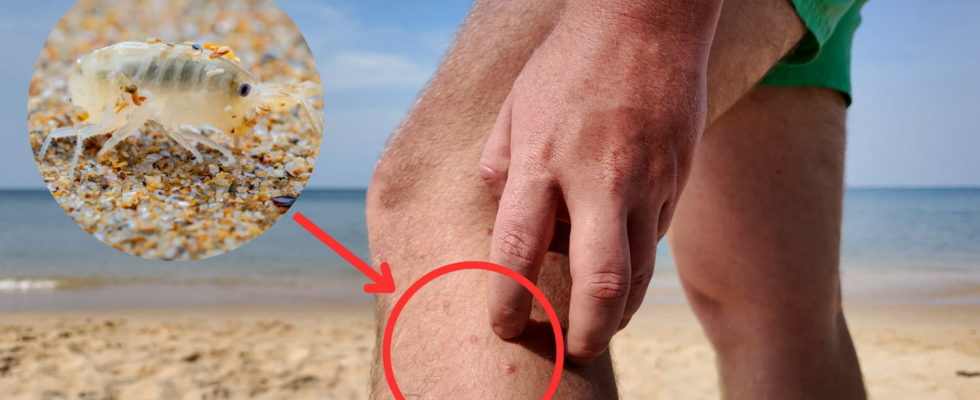The “sand flea” fears daylight and “attacks” especially in the morning and at the end of the day.
We are well acquainted with the bed bug, but much less so with the sand flea, also called the “sea flea” (Talitrus saltator for its scientific name). This small amphipod of about 2 millimeters hibernates between October and March and pokes its nose out during the nice weather. It is found at the seaside, particularly on the beaches of the Channel and the Mediterranean where it digs small galleries in the sand (hence its name) to shelter and take advantage of the humidity. It also likes to nest in rocks, marine debris or algae on which it feeds. It fears daylight and “attacks” especially in the morning and at the end of the day.
Its special feature? It is able to jump very high and sting humans with its saliva (although it is a crustacean and not an insect). Its bites are generally located on the legs, feet and ankles, taking the form of small red spots that itch a lot. Some people may develop an allergic reaction and have large rashes.
As far as possible, avoid scratching, as this can cause skin irritation or even infection. There are natural solutions to relieve itching: applying a mixture of water and baking soda on the bite, Aloe vera or even essential oils of Lavender or Tea Tree. Consult a doctor if symptoms persist; in case of allergic reaction or if it is a bite where the flea has laid its eggs: in this case, an aseptic extraction will be necessary.
To protect yourself:
→ Avoid beaches where you can find seaweed
→ Avoid going to the beach when it is particularly active, namely in the morning and at the end of the day
→ Avoid lying on a towel on the floor (if possible, use a deckchair or hammock)
→ Coat your feet and ankles withcoconut oil because the sand flea hates this smell
→ Wear closed shoes when walking on rocks or in areas where there is algae
→ Rinse your body with fresh water after spending time on the sand (especially children after a sandcastle session) and regularly inspect your legs and feet.
→ Shake out your clothes and shoes after the beach (like bed bugs, sand fleas can cling to your hair, clothes or beach towels and end up in your home).
